Additional Information to our CDI Project “CDI-Type I: Exploring Fundamental... Learning and Discovery in Cultures of Participation”
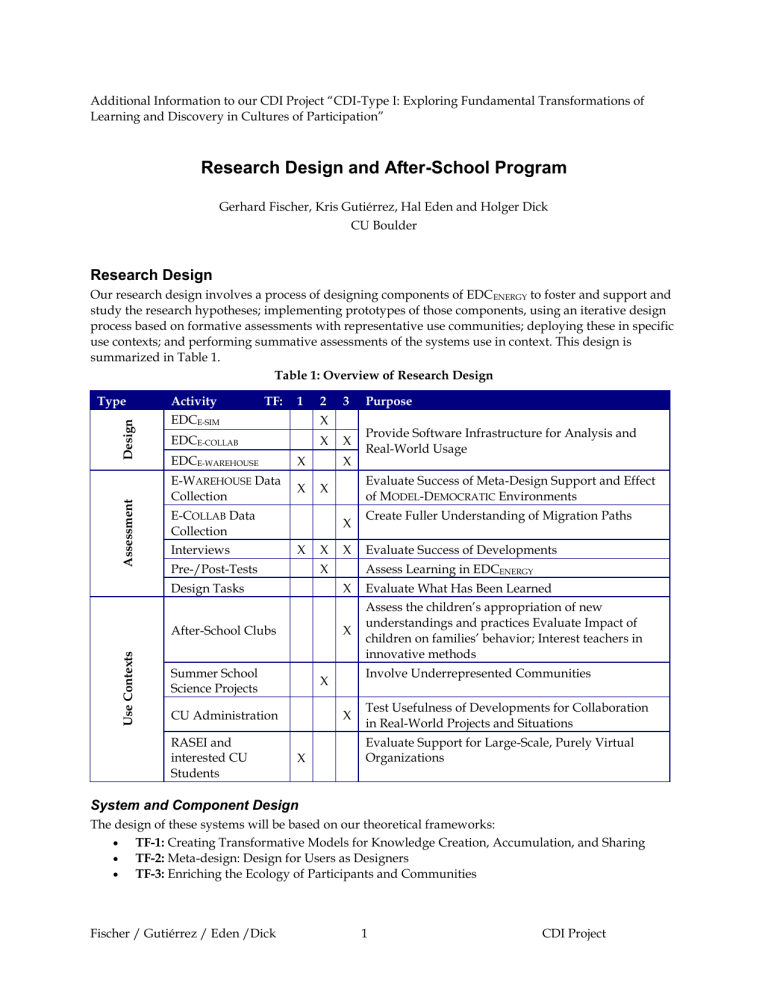
Additional Information to our CDI Project “CDI-Type I: Exploring Fundamental Transformations of
Learning and Discovery in Cultures of Participation”
Research Design and After-School Program
Gerhard Fischer, Kris Gutiérrez, Hal Eden and Holger Dick
CU Boulder
Research Design
Our research design involves a process of designing components of EDC
ENERGY
to foster and support and study the research hypotheses; implementing prototypes of those components, using an iterative design process based on formative assessments with representative use communities; deploying these in specific use contexts; and performing summative assessments of the systems use in context. This design is summarized in Table 1.
Table 1: Overview of Research Design
Type Activity
EDC
EDC
E-SIM
E-COLLAB
EDC
E-WAREHOUSE
TF: 1 2 3 Purpose
X
X X
Provide Software Infrastructure for Analysis and
Real-World Usage
X X
E-W AREHOUSE
Collection
Interviews
Data
E-C OLLAB Data
Collection
X X
X
Evaluate Success of Meta-Design Support and Effect of M ODEL -D EMOCRATIC Environments
Create Fuller Understanding of Migration Paths
Pre-/Post-Tests
Design Tasks
X X X Evaluate Success of Developments
X Assess Learning in EDC
ENERGY
X Evaluate What Has Been Learned
After-School Clubs
Summer School
Science Projects
X
X
Assess the children’s appropriation of new understandings and practices Evaluate Impact of children on families’ behavior; Interest teachers in innovative methods
Involve Underrepresented Communities
CU Administration
RASEI and interested CU
Students
X
X
Test Usefulness of Developments for Collaboration in Real-World Projects and Situations
Evaluate Support for Large-Scale, Purely Virtual
Organizations
System and Component Design
The design of these systems will be based on our theoretical frameworks:
TF-1: Creating Transformative Models for Knowledge Creation, Accumulation, and Sharing
TF-2: Meta-design: Design for Users as Designers
TF-3: Enriching the Ecology of Participants and Communities
Fischer / Gutiérrez / Eden /Dick 1 CDI Project
Specific aspects of the design of system components will be targeted at supporting and testing initial hypotheses as indicated in Table 2.
Table 2: Hypotheses and Actions
Initial Hypotheses
Peer learning needs to be complemented by the contributions of curators, mentors, coaches, and guides. It also includes particular ways of organizing the learning ecology, and, thus the social organization in which the more expert person participates
Scaffolding mechanisms are needed to support migration paths
Actions
EDC
COLLAB
and EDC
WAREHOUSE
will be designed to contain specific support for these roles. El
Pueblo Mágico will be designed to support a new learning ecology and insights for technical systems will be gleaned from these experiences.
Special interaction mechanisms are needed for different levels of participation
Rewards and incentives are needed to reduce the funnel effect from one level to the next
All components of EDC
ENERGY
will provide awareness, encouragement, and support mechanisms to ease transition to new levels of involvement
Our iterative design process, formative assessments, and meta-design process will focus on what support is needed at various levels
The social and technical design of EDC
ENERGY will explore various techniques to encourage new levels of involvement, including social recognition, point systems and normative awareness
As the design is refined through interaction with the use communities, additional hypotheses will be formulated for study and assessment.
Formative Assessment Processes
Throughout the iterative design process we will work with targeted use communities drawn from the planned contexts (described below). Expanded versions of these assessment tools will be utilized for the summative assessments, as well.
We will collect usage data, in particular data on how much time users spent browsing the environment, how much they contribute, and how much they communicate with other users. We will use these data to create linear regression models of how their interactions influence their level of involvement. We will also use the data to create models how users advance to more active roles, and if or how they go back to more passive roles.
We will use semi-structured interviews, using synchronous interview tools (online video-chat) to interview remote users. In addition, we will use asynchronous tools (mails and questionnaires) to get a greater sampling rate and evaluate patterns we identify in the semi-structured interviews
We will create a rubric to analyze how different concepts and methods–e.g. mass collaboration, remixing, re-use of existing elements, and newly gained knowledge about energy consumption–have been used in the creation of the objects. We will then manually code a representative sample of the objects in the warehouse to analyze how effective our efforts have been in motivating users to learn about and use new concepts. In addition, these coded objects will be correlated with the role their creators are assuming inside the environment–as identified by the usage data analysis mentioned above.
The key areas for assessment include warehouse usage, roles and migration, changes in behavior, abstract learning, application of learning, and computational thinking.
Fischer / Gutiérrez / Eden /Dick 2 CDI Project
Warehouse usage will focus on analysis of the quality and distribution of models and schedules in EDC
E-WAREHOUSE
. From the analysis of objects in the warehouse, will provide a better understanding of the success or failure of the provided meta-design support.
Roles and migration will analyze the effect of a M ODEL -D EMOCRATIC environment on user behavior by observing contribution and reading patterns of participants and to understand how participants of EDC
ENERGY
migrated in their roles over time.
Change in behavior will study changed usage and energy consumption as a consequence of using the environment.
Abstract Learning will evaluate the understanding of concepts concerning energy consumption.
Computational Thinking will explore tasks such as scheduling appliances outside of peak consumption times by taking advantage of smart meters improves their understanding of energy choices.
Application of Learning will utilize several design tasks that require the participants to use the learned information in novel ways. Similar activities will be used in after-school activities (see below) as well. In one example task, they will be asked to design energy schedules and to simulate their own energy consumption, making use of existing work as well as the information in EDC
E-COLLAB
to create new objects and schedules.
Social Design Experiments
To evaluate our work in specific educational settings, Kris Gutierrez will integrate and assess our research using social design experiments [Gutiérrez & Vossoughi, 2010] in existing large-scale activities:
After School Clubs.
Through existing collaborations with after school clubs in the Boulder area, we will use the proposed developments for learning activities surrounding the energy domain.
After school clubs offer us the possibility to make use of innovative teaching techniques and evaluate their effectiveness. If our developments prove successful in supporting learning, we can support the involved teachers in using the environment for classroom activities.
More details about this activity called “El Pueblo Mágico” are provided below.
Assessment of EDC
E NERGY
in Different Contexts
Our proposed developments will be used in a variety of experimental and real-world contexts to evaluate the underlying hypotheses concerning learning and discovery based on our TFs.
We will take advantage of three other VOs to analyze the impact of our developments to foster learning and discovery in cultures of participation (see letters for all these collaborations in Supplementary
Documents Section):
City of Boulder. Being the first smart grid city in the USA (based on a $150 million project installing over 200 miles of fiber and 25,000 smart meters), the leaders of this project are very interested in our basic assumption that while new technologies are important, much more is required to make the SmartGrid vision a true success: Boulder’s citizens need to learn about these new possibilities, they need to become interested and engaged, and the city needs to make sure that this project is beneficial to all of our citizens.
CU Administration. The CU Office for the Vice Chancellor of Administration is interested in exploring new ways of reducing energy costs. We will deploy our developments with CU’s
Sustainability Action team to support them in their planning efforts. This context represents a real-world usage of our developments, testing their usefulness and robustness.
RASEI Community and RASEI Student Alliance. The Renewable and Sustainable Energy Institute
(RASEI) at the University of Colorado at Boulder and the RASEI Student Alliance bring together researchers and students from different departments and backgrounds. Getting the RASEI community involved will allow us to build a larger scale, purely virtual organization to make use of our developments. This will be especially useful to analyze migration behaviors within the community and to test the scalability of our developments.
Fischer / Gutiérrez / Eden /Dick 3 CDI Project
After-
School Program “El Pueblo Mágico”
http://www.elpueblomagico.org/
El Pueblo Mágico, located in a low-income, immigrant community school eight miles from the University, is conceptually and structurally isomorphic with an undergraduate course and the virtual cultures of participation model of the larger project. Modeled after a successful 15-year collaborative project that engaged UCLA students in an after-school computer club at one of the largest port-of-entry elementary schools in Los Angeles, the present intervention includes a rigorous course series in which undergraduate students are introduced to cultural-historical approaches to learning and development, the affordances of technology-mediated learning activity, as well as opportunities to instantiate new knowledge in situ as co-problem solvers with elementary school children from non-dominant communities. By leveraging multidisciplinary expertise at the University, undergraduate students will have access to integrated theories of tool-mediated learning activity, as they develop understandings of the social organization of development and mediated praxis.
This ‘social design experiment’ (Gutiérrez, 2008; Gutiérrez & Vossoughi, 2010)—a cultural historical formation designed to promote transformative learning for adults and children—is organized around expansive notions of learning and sociocultural arrangements that help organize meaningful participation in cyber-mediated activity in which participants generate, appropriate, and share new scientific knowledge. Here the social architecture of El Pueblo supports cross-aged collaboration in virtual and place-based innovative practices that promote discovery, engagement, and a new imagination about the affordances of socio-technical environments and their tools. Specifically, this technologysaturated ecology invites novice/undergraduate teachers to work with K-5 children to co-participate in a wide spectrum of cyber-enabled science learning activity ranging from understanding energy use in
Figure 1: The virtual and activity-based maze of “El Pueblo Mágico”
Fischer / Gutiérrez / Eden /Dick 4 CDI Project
everyday practice or the health issues of the surrounding community, to writing problem-solving narratives to a cyber wizard, “El Maga” in which children explain what is learned and how. Participants move through a virtual and activity-based maze (see Figure 1) that privilege a particular ecological valid health science topics and practices central to developing new stances toward the empowering role of science in everyday life, appropriating new tools in the service of discovery and transformative understandings, and engaging in new forms of participation and collaboration in learning activity.
The “Imagination Station” is the key activity of the maze and houses the primary cyber activities of El
Pueblo. However, in this learning ecology, technologies are not the object of activity or a kind of ‘giftwrapping’ typical of much school-based use; nor is the virtual ecology disconnected from a robust learning ecology; these are nested ecologies that are mutually constitutive and supported. Of significance,
El Pueblo provides a unique opportunity to examine the cognitive and social consequences of participating in collaborative cultures where distributed expertise, discovery, and the playful imagination are privileged, and to study how health science knowledge can be leveraged across contexts and practices. Access to innovative cyber-enabled science learning activity and opportunities to generate new knowledge in tool-mediated activity is particularly consequential for the children at Alicia Sanchez
Elementary School, as health-related issues are the central impediment to learning and participation in this neighborhood school. At the same time, El Pueblo is not designed to replicate school (a feature critical to its sustainability) where students are passive consumers of science facts. This ecology privileges design and innovative problem-solving and, thus, participants are co-designers of science and healthscience related cyber activity that scaffolds active science learning, new stances toward the affordances of science in everyday activity, and new knowledge that should be of immediate use and consequence to the vulnerable families in this local community. In this way, students and families are agents in the design of new futures and school personnel (as active partners) will have new models of participation and learning.
Within the context of after school programs, we will engage children in
Exploring how they use energy in their daily lives through activities that are a mixture of hands-on involvement, investigation of their energy environment (in El Pueblo, at home, and in the broader environment of their community, city, state, and world), using measurement tools and product information to understand energy ratings, and via simulations that allow them to play “what if” games.
Writing about their learning experiences, questions, thoughts, and ideas about the relationship between energy and their lives
Explore how they would tell others about energy, show them, what visualizations, etc (explore with drawings, letters written to a cyber wizard, agent sheets simulations, etc)
Engaging in activities that encourage them to relate what they have learned to social problem solving activities that include teaching others what they have learned, brainstorming about how they could make things better by changing energy-use behaviors, strategize about what would encourage more people to think about their energy use, and sharing their stories with others
We will study the resulting interactions; data; education undergraduates’ “cognitive ethnographies” that document children’s use, problem-solving, and understandings; and interviews to understand:
How do their understanding and attitudes change?
What aspects of their participation in this environment encourage them to become more or less engaged in understanding or changing their energy use?
What impacts do their activities have on their surrounding social units—fellow El Pueblans, classmates, family—and vice-versa
In what ways to they become empowered to be more than a consumer, how do they “teach” others, become info resource, …
The equipment we envision utilizing for after school (see Budget Comments)
Fischer / Gutiérrez / Eden /Dick 5 CDI Project
Hand-crank generator units to support a very hands on/tangible means of comparing power use between devices
Supplies to build several Tweet-a-watt units and iPads to provide portable tools for visualizing, studying, and analyzing energy use in various contexts.
Various Arduinio-based supplies for construction of simple tangible devices to visualize, provide feedback, and share information on energy (employing work on “craftopolis” from [Eisenberg &
Meyer])
Fischer / Gutiérrez / Eden /Dick 6 CDI Project
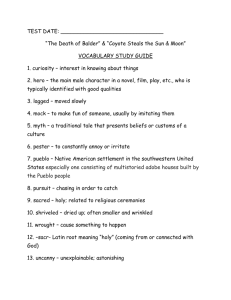
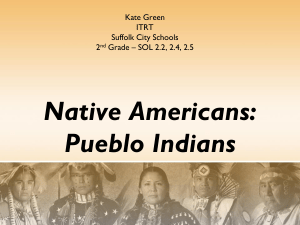
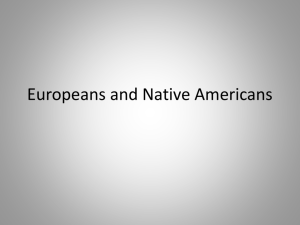
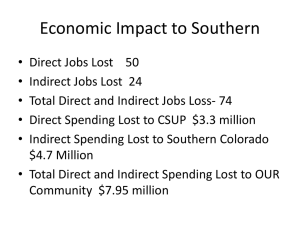
![Corn_moms_clean2[1].doc](http://s2.studylib.net/store/data/015297753_1-5ffdfeba8f157e43000a40be860cf2c9-300x300.png)
